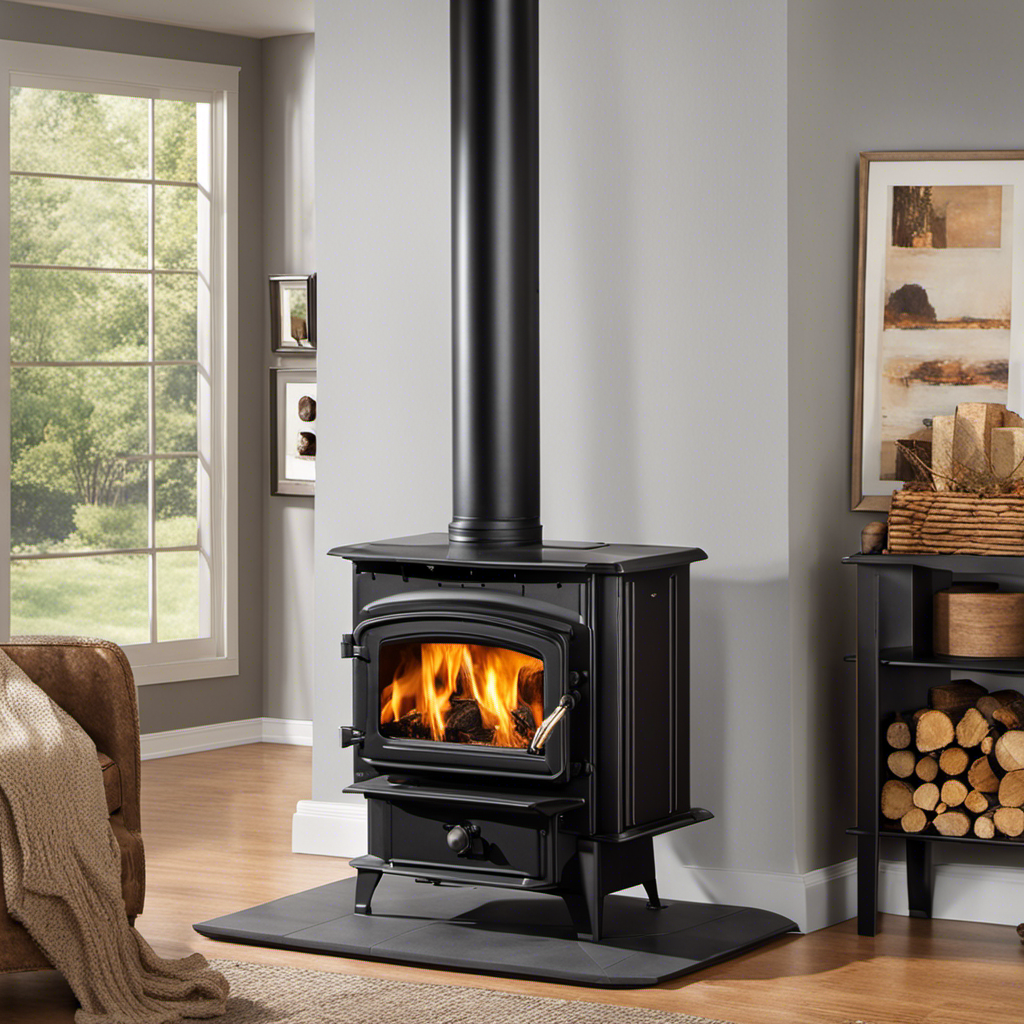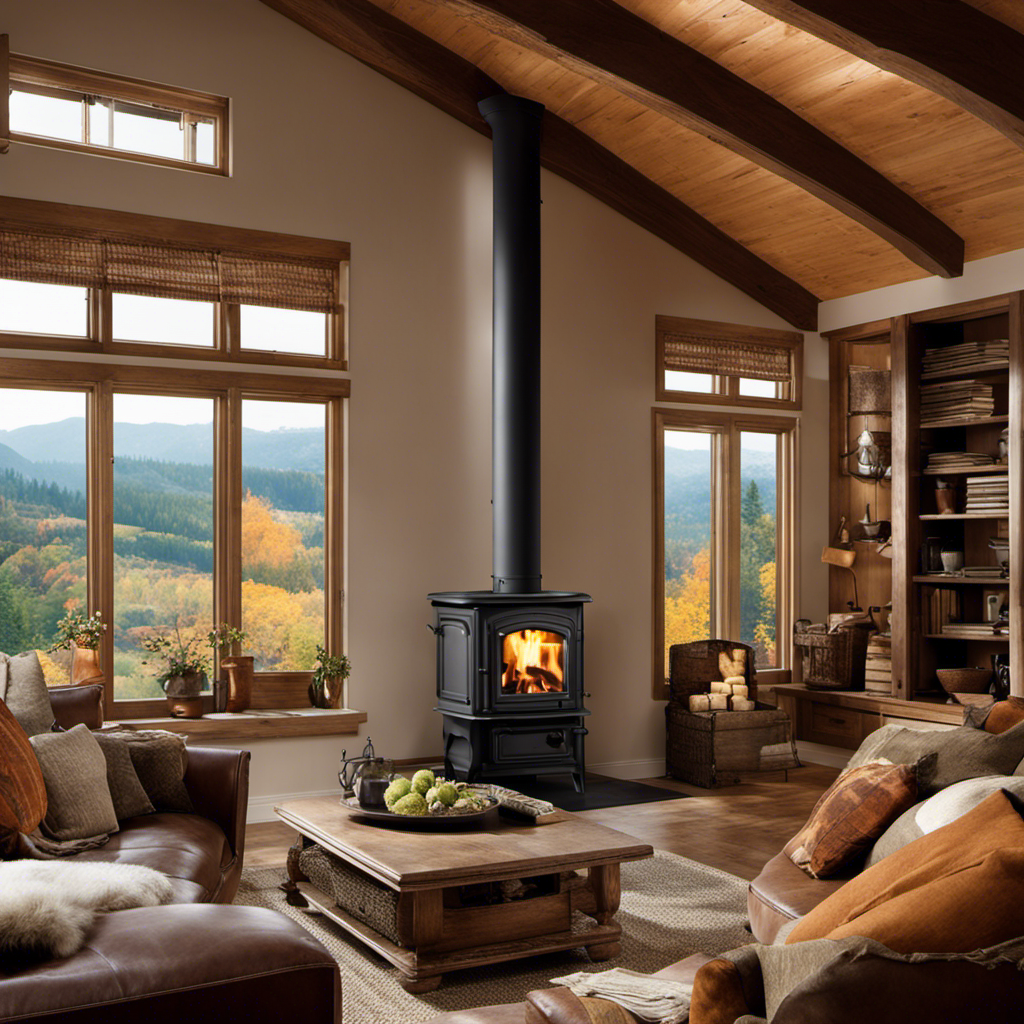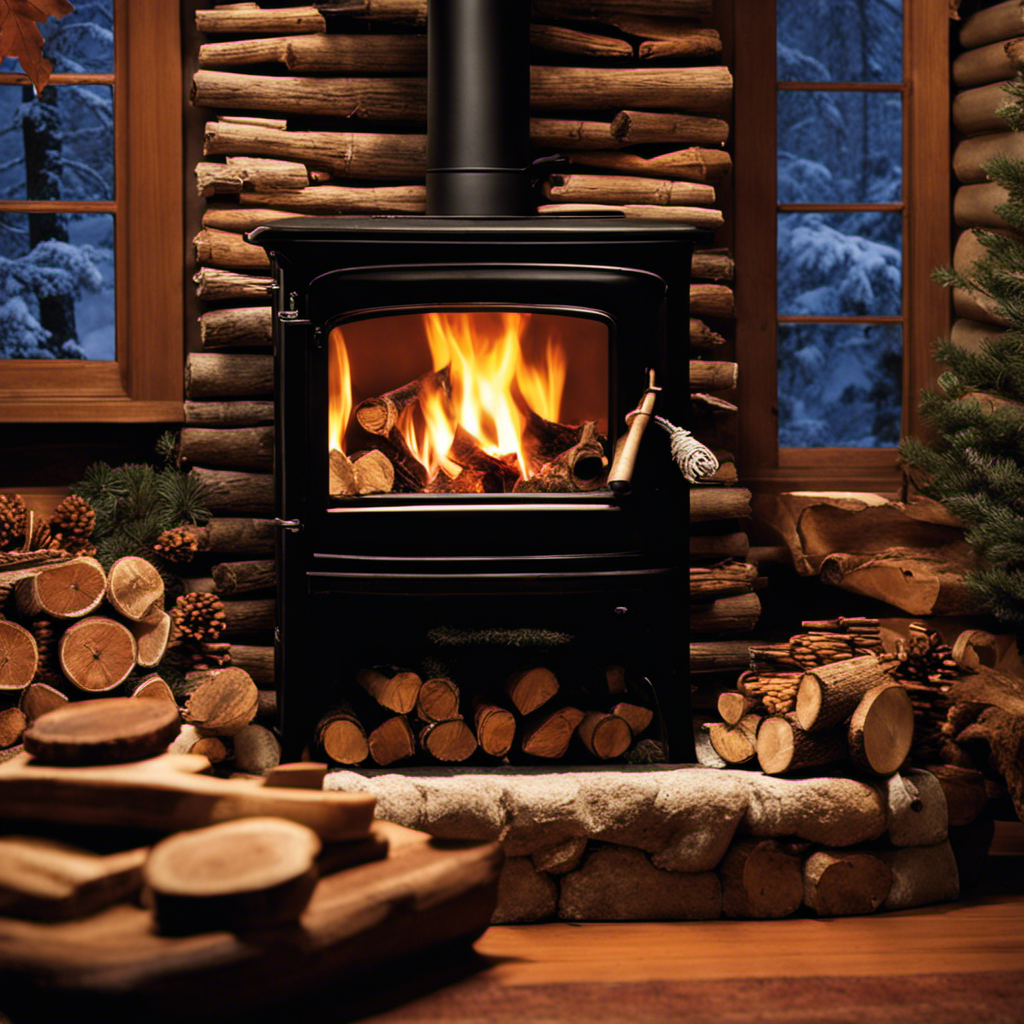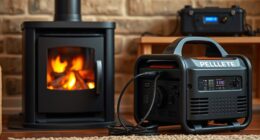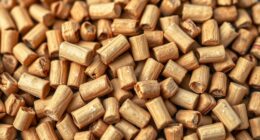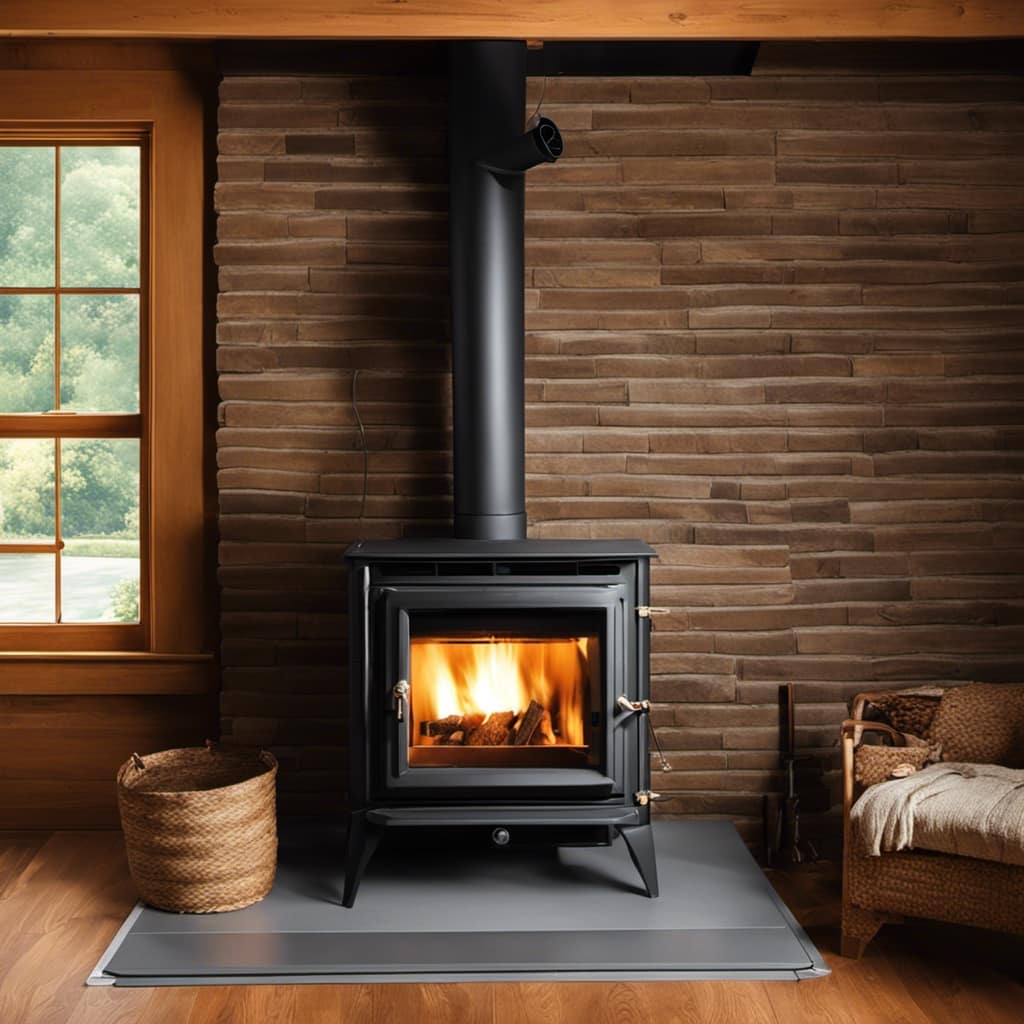
Hey there! If you’re fed up with the ongoing upkeep needed for your wood stove, I’ve got some revolutionary tips for you.
In this article, I’m going to show you how to keep your wood stove burning longer than you ever thought possible. From choosing the right wood to mastering fire-building techniques, I’ve got you covered.
Get ready to sit back, relax, and enjoy the warmth without constantly fussing over your stove. Let’s dive in!
Key Takeaways
- Proper wood selection: Choose dry hardwoods like oak, maple, or ash for efficient and high heat output.
- Fire building techniques: Start with kindling and arrange smaller pieces of wood in a crisscross pattern for better airflow and burning.
- Maintaining adequate airflow: Clear air intake vents of debris, adjust dampers to control oxygen, and use efficient dampers to regulate airflow.
- Utilizing heat-retaining materials: Use insulating barriers like firebrick or refractory cement to prevent heat loss, maximize burn efficiency, and keep the home warm.
Proper Wood Selection
I find that using dry hardwoods like oak or maple for my wood stove helps keep it longburning. The wood moisture level and density play a crucial role in the efficiency and duration of the fire.
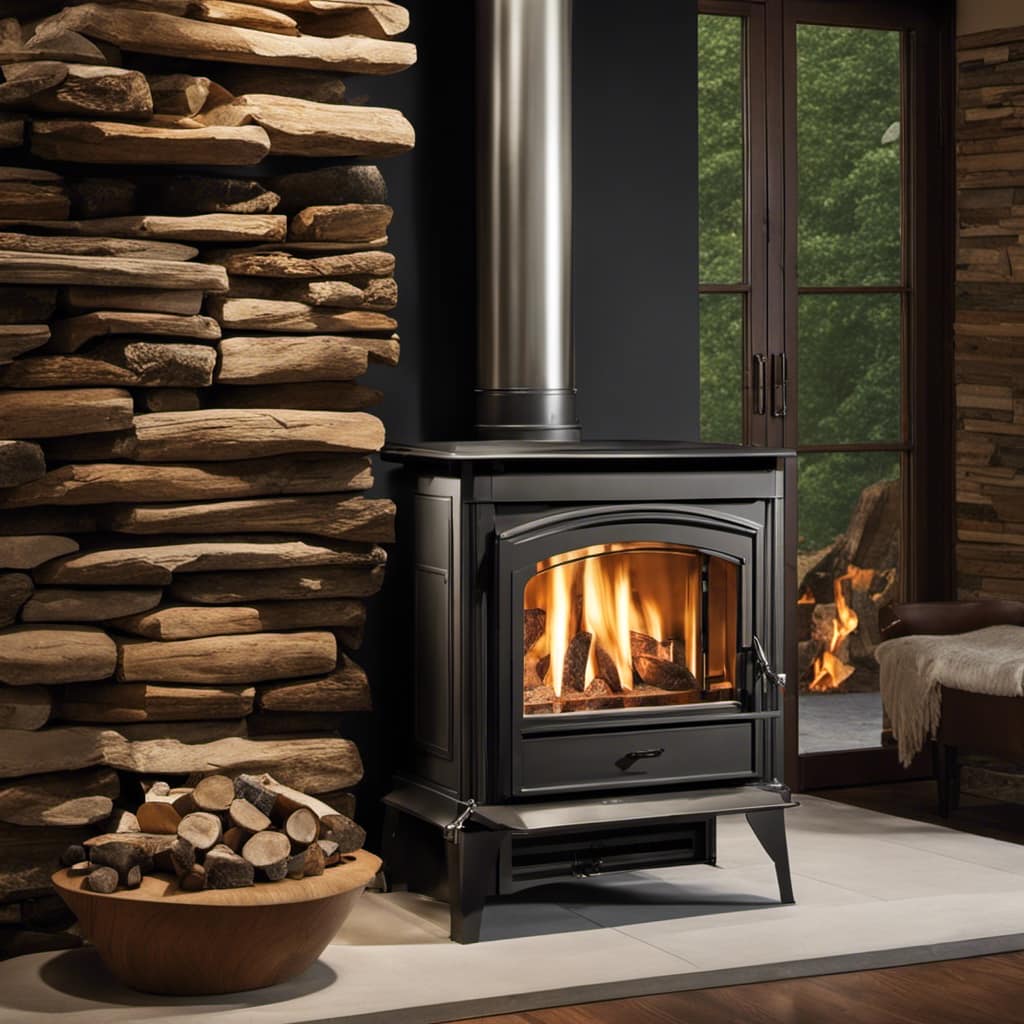
When selecting wood for my stove, I always ensure that it has a moisture content of less than 20%. Moisture in the wood can hinder combustion and cause excessive smoke.
Dry hardwoods have a higher density, which means they contain more energy and burn slower and longer. Oak and maple, in particular, have a high density and provide a steady heat output.
I make sure to properly season my wood, allowing it to dry for at least 6-12 months before using it in my stove. This ensures optimal performance and a longer burning time.
Effective Fire Building Techniques
To achieve long-lasting fires, I find that using smaller pieces of dry hardwood and arranging them in a crisscross pattern works best. This technique ensures optimal fuel efficiency and allows for better draft control. Here are some tips for effective fire building:
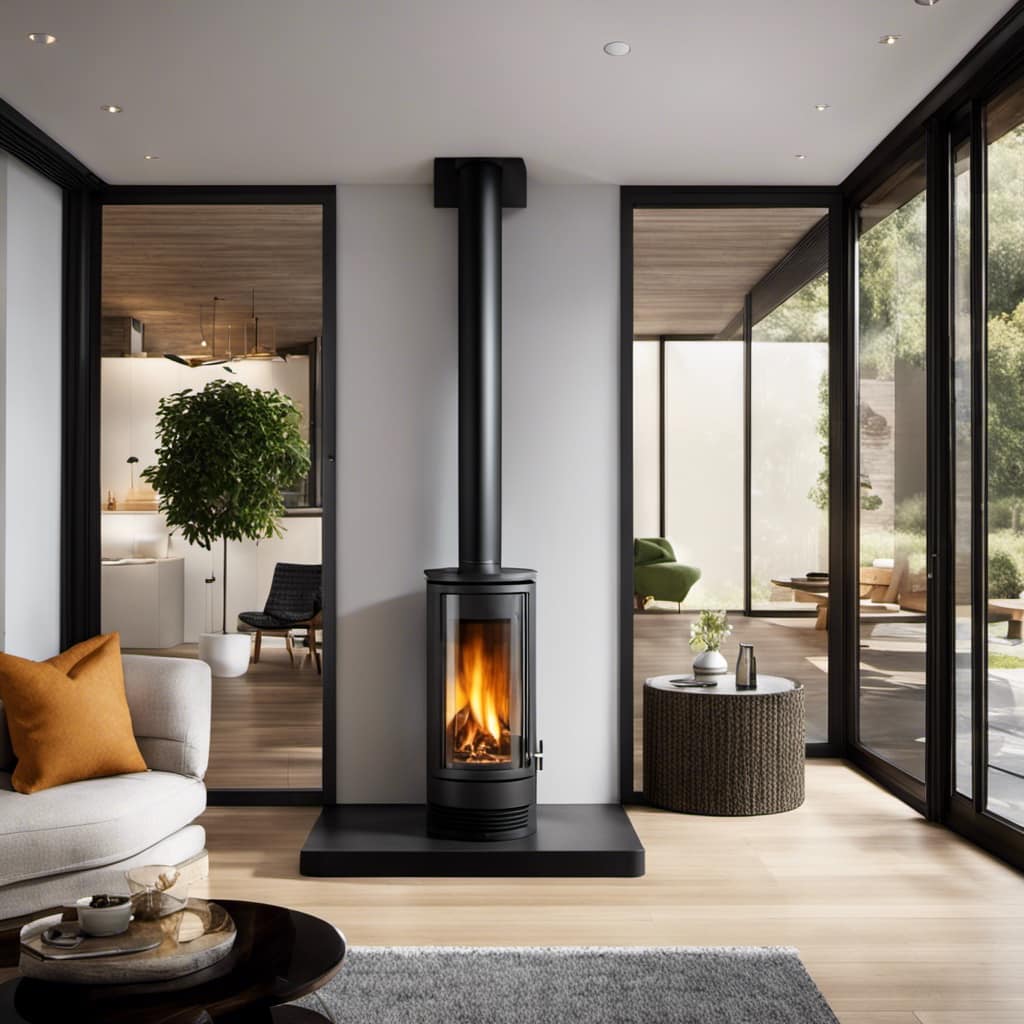
-
Choose dry hardwood: Dry hardwood burns more efficiently and produces more heat compared to wet or softwood. Oak, maple, and ash are excellent choices.
-
Start with kindling: Use small sticks or twigs to create a base for your fire. These will catch fire easily and help ignite the larger pieces of wood.
-
Arrange in a crisscross pattern: Stack the smaller pieces of wood in a crisscross pattern to allow for airflow and promote better burning.
-
Gradually add larger pieces: Once the fire is established, add larger pieces of wood gradually to maintain a consistent heat output.
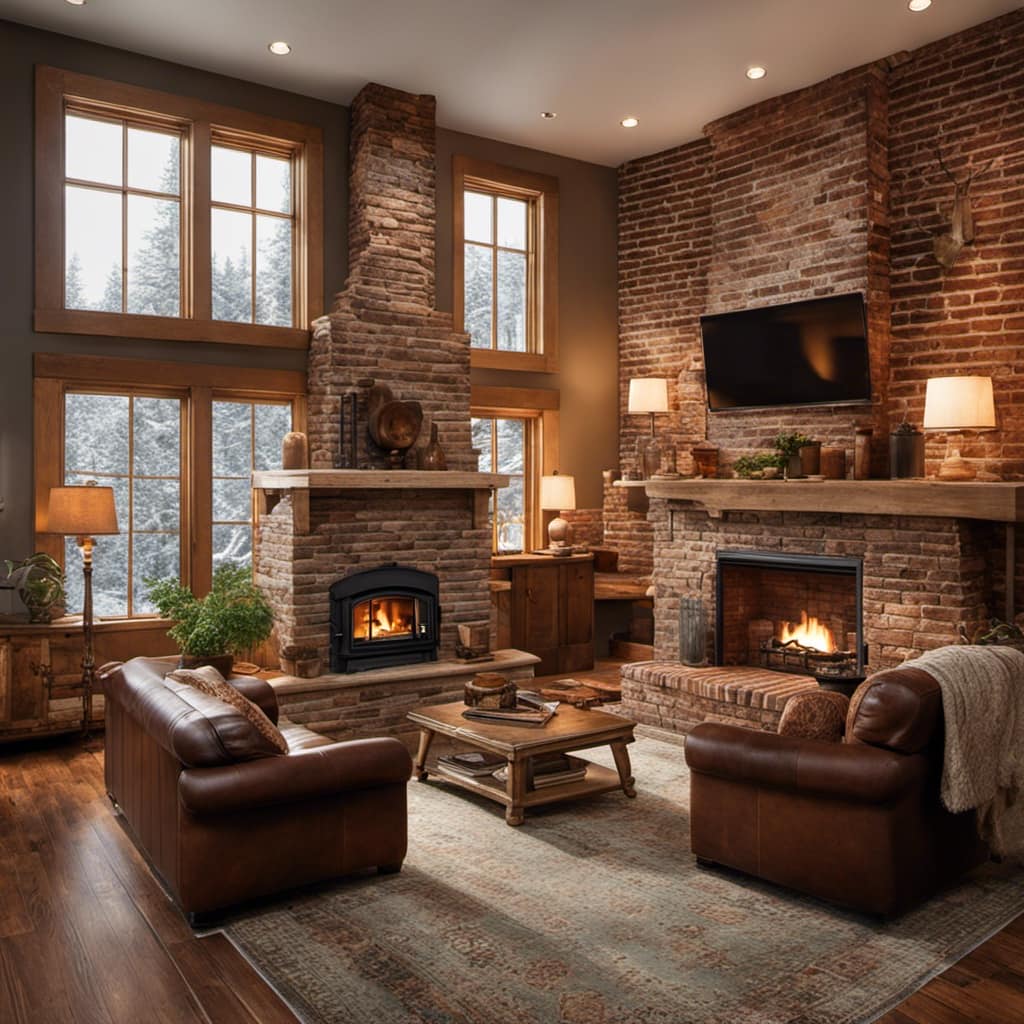
Maintaining Adequate Airflow
Maintaining adequate airflow is crucial for ensuring a steady and efficient burn in my wood stove. To ensure proper ventilation, I make sure to keep the air intake vents clear of any debris or obstructions. This allows fresh air to flow into the stove and helps in achieving a clean and complete combustion.
Additionally, using efficient dampers plays a vital role in regulating the airflow. I adjust the dampers according to the desired burn rate, allowing me to control the amount of oxygen entering the stove. This helps in maintaining a consistent and efficient burn, preventing the wood from smoldering or producing excessive smoke.
Utilizing Heat-Retaining Materials
Utilizing heat-retaining materials in my wood stove helps to maximize the efficiency of the burn and keep my home warm for longer periods of time. By adding insulating barriers to the stove, I can prevent heat loss and ensure that the warmth stays inside. This not only reduces the amount of wood I need to burn, but also saves me money on heating costs.
Additionally, temperature regulation is essential for a long-burning wood stove. I use firebrick or refractory cement to line the firebox, as these materials absorb and radiate heat effectively. This helps to maintain a steady temperature, preventing rapid fluctuations that can lead to inefficient burning.

With these heat-retaining materials in place, my wood stove provides consistent warmth and a longer burn time.
Regular Cleaning and Maintenance
Regular cleaning and maintenance of my wood stove is crucial for optimal performance and safety. Neglecting these tasks can lead to poor combustion, reduced heat output, and even potential fire hazards. To ensure my wood stove operates efficiently, I follow a regular maintenance schedule that includes chimney inspection and creosote removal. This helps prevent the buildup of creosote, a highly flammable substance that can accumulate inside the chimney and increase the risk of a chimney fire. I also inspect the chimney for any obstructions or damage that could hinder proper airflow. By keeping my wood stove clean and well-maintained, I can enjoy its long-burning capabilities and ensure the safety of my home and family.
| Maintenance Task | Frequency |
|---|---|
| Chimney Inspection | Annual |
| Creosote Removal | Every 2-3 months |
Frequently Asked Questions
How Do I Prevent Creosote Buildup in My Wood Stove?
To prevent creosote buildup in my wood stove, I clean the chimney regularly and burn seasoned hardwood. By maintaining proper airflow and not restricting the stove’s draft, I can ensure efficient burning and reduce the risk of creosote accumulation.
What Is the Ideal Moisture Content for Firewood?
The ideal moisture content for firewood is around 20%. It’s crucial to use dry firewood because wet wood produces less heat, creates more smoke, and increases the risk of creosote buildup in the stove.
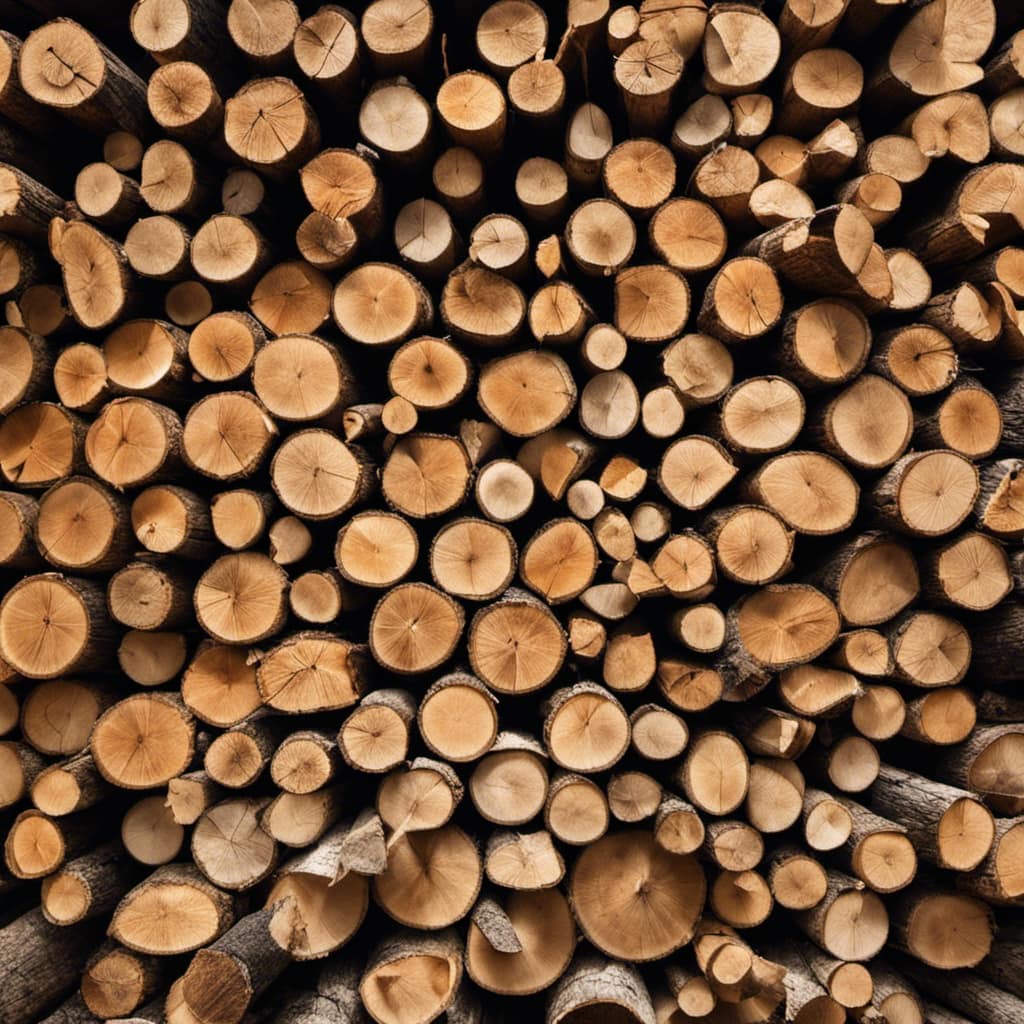
Can I Use Softwood in My Wood Stove?
Yes, you can use softwood in your wood stove, but it burns faster than hardwood. To keep your wood stove longburning, it’s best to use seasoned firewood, which has a lower moisture content and provides more efficient heat.
Are There Any Safety Precautions I Should Take When Using a Wood Stove?
When it comes to fire safety tips, proper ventilation is key. You don’t want your wood stove turning into a smoke-filled disaster. So, be sure to keep those air vents open and clear!
How Often Should I Have My Wood Stove Inspected by a Professional?
I make sure my wood stove is in good working condition by scheduling professional inspections regularly. It’s important to know how often to have them done to ensure safety and efficiency.
Conclusion
In conclusion, tending to your wood stove is like nurturing a flame within your home. By selecting the right wood, building fires effectively, maintaining proper airflow, and using heat-retaining materials, you can ensure a long-burning experience.
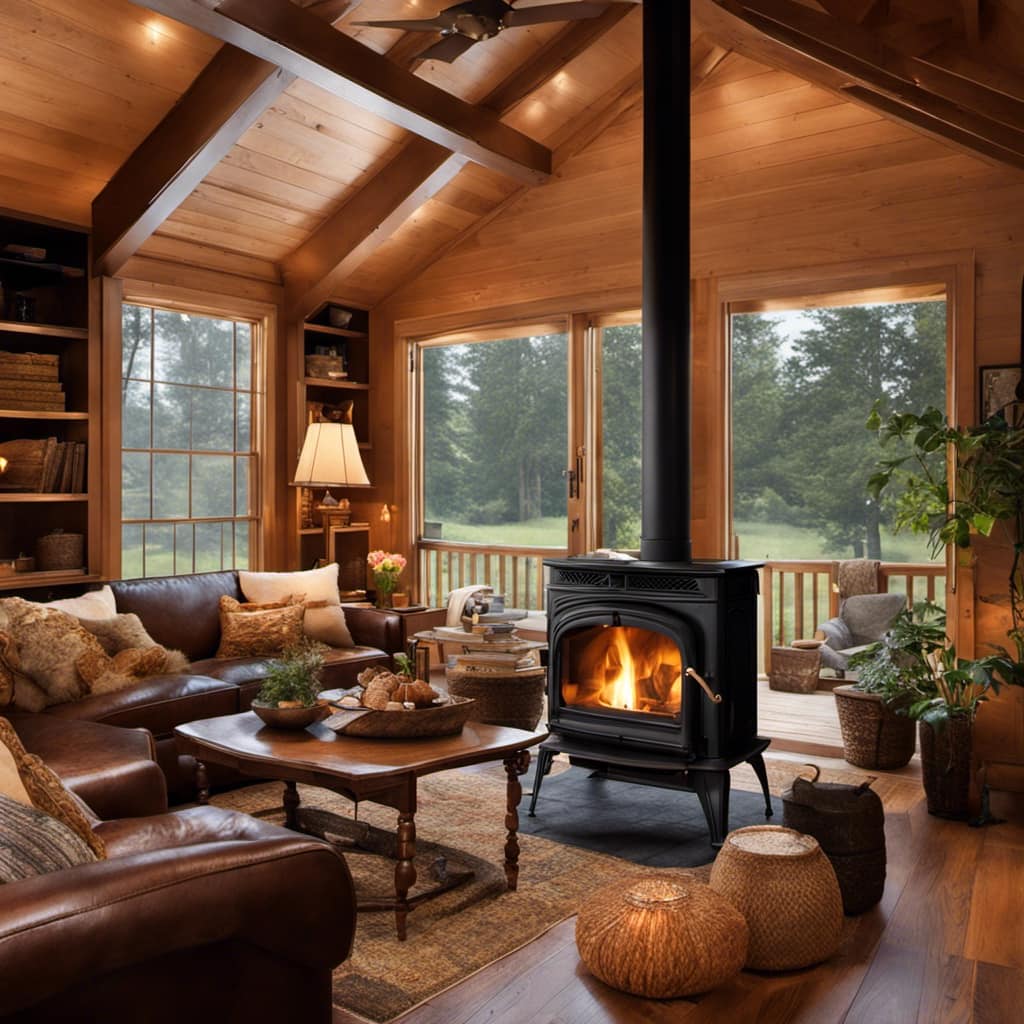
Just as a gardener tends to their plants, a wood stove owner must tend to their fire. Regular cleaning and maintenance will keep your stove in top condition, providing warmth and comfort for years to come.
Embrace this responsibility and enjoy the cozy embrace of a long-burning wood stove.
Growing up surrounded by the vast beauty of nature, Sierra was always drawn to the call of the wild. While others sought the comfort of the familiar, she ventured out, embracing the unpredictable and finding stories in the heartbeat of nature.
At the epicenter of every remarkable venture lies a dynamic team—a fusion of diverse talents, visions, and passions. The essence of Best Small Wood Stoves is crafted and refined by such a trio: Sierra, Logan, and Terra. Their collective expertise has transformed the platform into a leading authority on small wood stoves, radiating warmth and knowledge in equal measure.



